I get asked about my favorite vegetable varieties all the time, and I am finally putting them all in one place (instead of being smattered all over my Instagram page and largely unsearchable).
One of the things I like most about growing my own veggies is trying new varieties every year… just waiting for something to come along and blow me away. And once it does, it makes the permanent list! That what this is– my “must grow every year” list. These are the best of the best vegetable varieties, that I’ve collected through trial and error over 15+ years of gardening!
I’ve grown hundreds and hundred of varieties over time to get here– and I still do! Even though I have 6 different tomato varieties that I simply can’t live without, that doesn’t mean I’m not growing a bunch of new-to-me varieties every year too. And that pretty much goes for every veggie variety. I will continue to update this list as I fall in love with new varieties, or when one variety gets knocked off its throne by another.
A note about gardening: Everyone will have different success with different vegetable varieties depending on their climate, soil-type, and gardening karma. I’m in Zone 4 Wisconsin with one main growing season. We grow the majority of our veggies in the ground (as opposed to raised beds). And if you’re curious, I think my gardening karma is average to slightly above average. :)
My Favorite Tried and True Vegetable Varieties

BEANS (Snap/Green)
Jade
These are a reliable producer and are prolific with large, tender beans. Of all the varieties of green beans I’ve tried, I think these freeze the best. This is the bush bean that I grow the most of: they are what we cook to eat fresh during the growing season and freeze for the winter. Here’s my no-fail method for freezing green beans –> video link.
Velour
A purple French filet-type, these have the most brilliant purple color with an almost metallic quality. The only thing I don’t like about these, is that they cling tighter to the plant than other varieties, so they often require two hands to pick, lest you rip the whole plant out of the ground. I don’t grow these as my main bean, but I always have to grow a handful of these plants to add color to my bean harvest basket. We typically eat these raw because they are very tender and delicious that way, but also because they lose their purple color when cooked.
Beurre de Rocquencourt
Beautiful sunny yellow color, these are large, easy to pick, and are perfect for fresh eating and lightly sautéing. They don’t freeze well, but they do make good pickled dilly beans. This is another one that I don’t grow a ton of, but I do always grow some of… just to add color and fun to the garden and our harvests.

BEANS (Dried)
Rosso di Lucca
These dried beans are so beautiful with varying shades of pink, rose, and salmon with dark purple-brown stripes and speckles. I love these for minestrone soup and chili… anywhere you would use a kidney bean, these are fantastic! Bonus: they grow on sturdy plants that don’t tend to flop over and get covered with mud and rot!
Eye of the Goat/Ojo de Cabra
Once cooked, these are velvety smooth and seriously so creamy! They have fantastic flavor all on their own and don’t need much else. They are a great choice for a bean side dish where they are the star, but I typically use them in soup and for refried beans.
Good Mother Stallard
One of the first beans I ever grew, these beans are stunning with swirls of purple-y magenta on a background of white, in a way that reminds me of Van Gogh’s Starry Night. These are similar to Eye of the Goat in that they are nutty, full-flavored, and really don’t need much else. I’ve heard Good Mother Stallard referred to as “everybody’s favorite bean!”
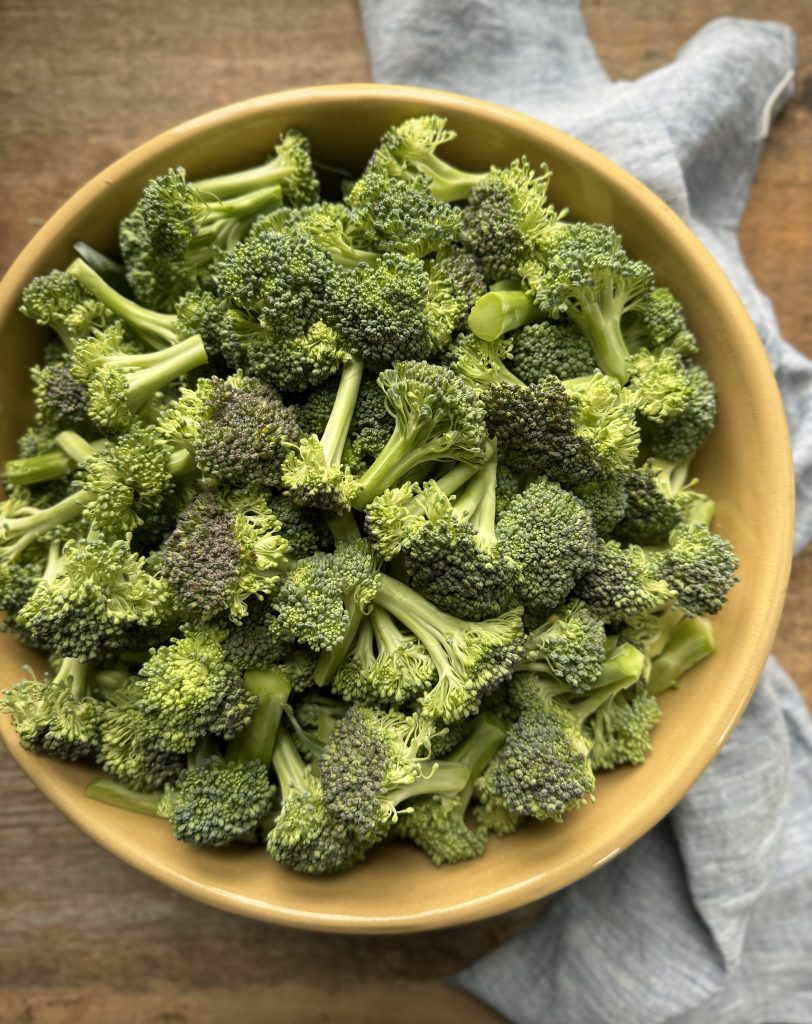
BROCCOLI
Gypsy F1
I never loved a broccoli variety until I grew this one. It does great in my Wisconsin garden every year. It puts out a nice-sized main head, but the reason I adore it is for its epic side shoots. Once the main head is harvested, it goes to work putting out softball-sized side shoots all summer long, performing decently even during the heat of summer. Here’s how I freeze broccoli every year –> video link.
Santee Purple Sprouting F1
As a sucker for purple veggies, I’ve tried at least 4 different varieties of purple sprouting broccoli over the years. They’ve never produced well for me until this one. This is one of the quicker producing purple varieties I’ve come across, which is why it works in my short growing season. Even so, it still takes until Fall to get a harvest from it (so not a great choice if you only have a small gardening space where the real estate is extremely precious) but this broccoli is wildly stunning and worth the wait!

BEETS
Badger Flame
The most gorgeous beet with golden glowing orange skin and yellow flesh inside. It’s sweet and has only just a hint of that beet “earthiness.” A great variety to try if you’re not crazy about beets but want to like them.
Cylindra
These red beets are elongated and “cylinder” shaped instead of round. They’re easy to cook because they are all similar size to each other, and similar size the length of the beet. Their shape means they make lovely uniform round slices for things like pickled beets.

CABBAGE
Caraflex F1
Pointy like a gnome’s hat, these cabbages are on the smaller side and are quick to finish. Incredibly sweet and tasty, this is the variety I plant in the early spring for harvesting in the middle of summer to make slaw and cabbage salads (though they make a mighty fine kraut too). Here’s how we make and store a year’s worth of sauerkraut –> video link.
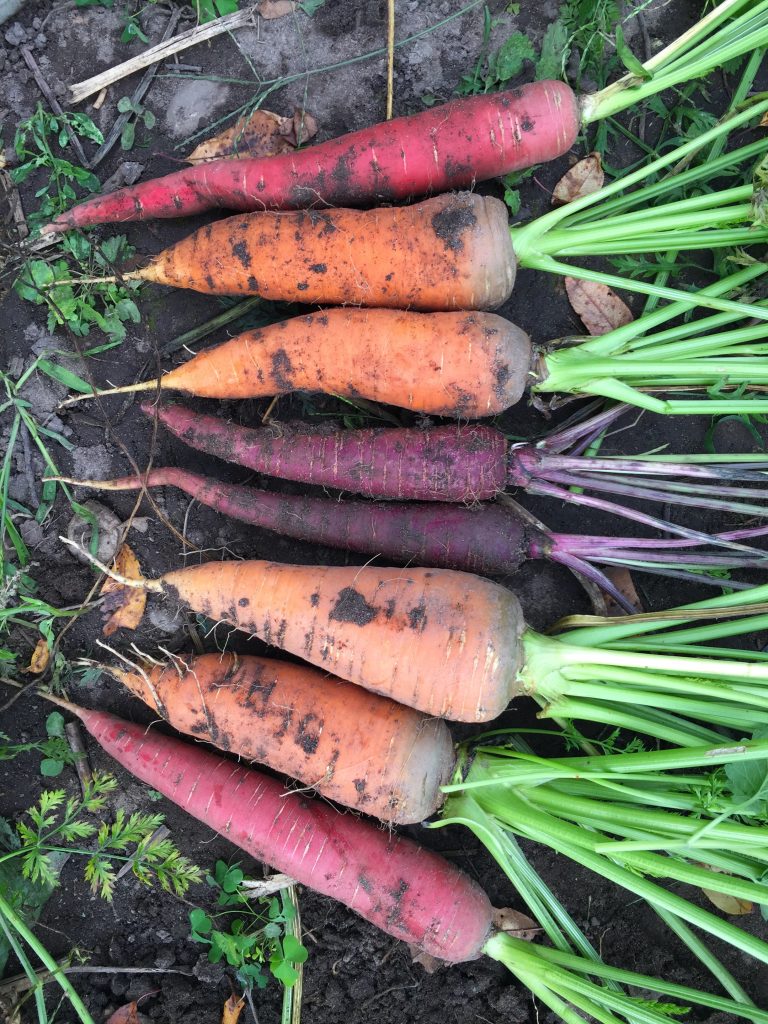
CARROTS
Danvers 126
Old faithful in my garden, I let these grow longer than needed and they produce the biggest, most epic carrots! If you’ve seen me pull a gigantic carrot from the ground, it’s likely this variety! These are my favorite variety for winter storage, so I always grow a lot of them. They last a long time in storage and remain sweet until the end. Here’s how we store carrots for 6 months without a root cellar –> video link.
Cosmic Purple
I keep trying other purple carrot varieties and am continually disappointed by them. Cosmic Purple is a reliable favorite! It is deep purple, sometimes almost brownish purple on the outside, with a yellow and orange center. They are stunning when cut into coins, and they’re always delicious! They keep decently in the refrigerator, though not as long as traditional “long keeper” varieties like Danvers.
Dolciva F1
This has been another reliable producer for me. It has a beautiful, straight shape, is tender and snappy, has good flavor, and holds its sweetness in storage.

CORN (Popping)
Amish Butter
Sometimes called Pennsylvania Dutch Butter as well, this variety has lovely light yellow kernels. In our popcorn tasting trials, this variety had good corn flavor and some of the least prominent hulls.
Cherokee Long Ear
The most gorgeous multi-colored corn, these ears double as falltime decor. They are similar to glass-gem but pop much better in my experience. In our tasting trials, this variety had above average corn flavor and moderately prominent hulls.
Dakota Black
A fantastic choice if you’re in a colder climate or have a shorter season– these are always the first variety to finish and are ready a couple weeks before the other two I mentioned above. The kernels of this corn are deep black with a sheen of purple and red in the background. This variety has the most corn flavor, but also the hardest hulls of the three that I routinely grow.
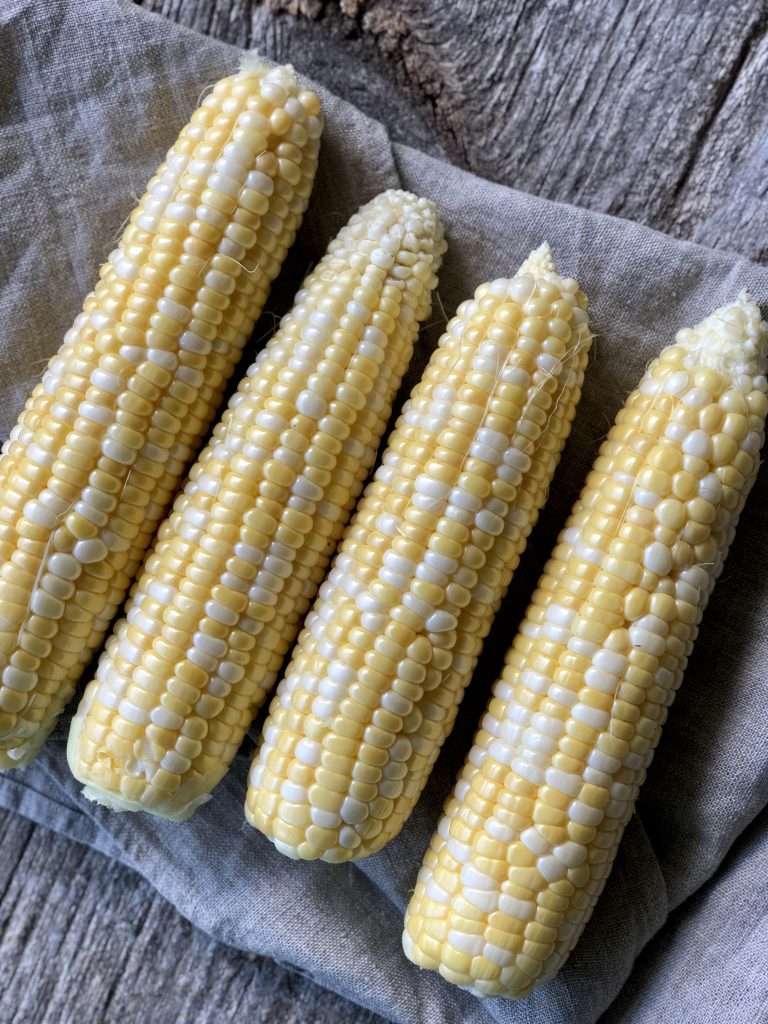
CORN (Sweet)
Serendipity F1
This sweet corn has big sweetness without tasting unnaturally sweet, or lacking in real classic sweet corn flavor. My favorite thing though, is its ability to hold on the plant. Typically, once sweet corn is ready, it’s ready and you pick it all. These ripen, and then keep their flavor and sweetness while holding on the plant for weeks… so we can have fresh corn on the cob for an extended period of time!
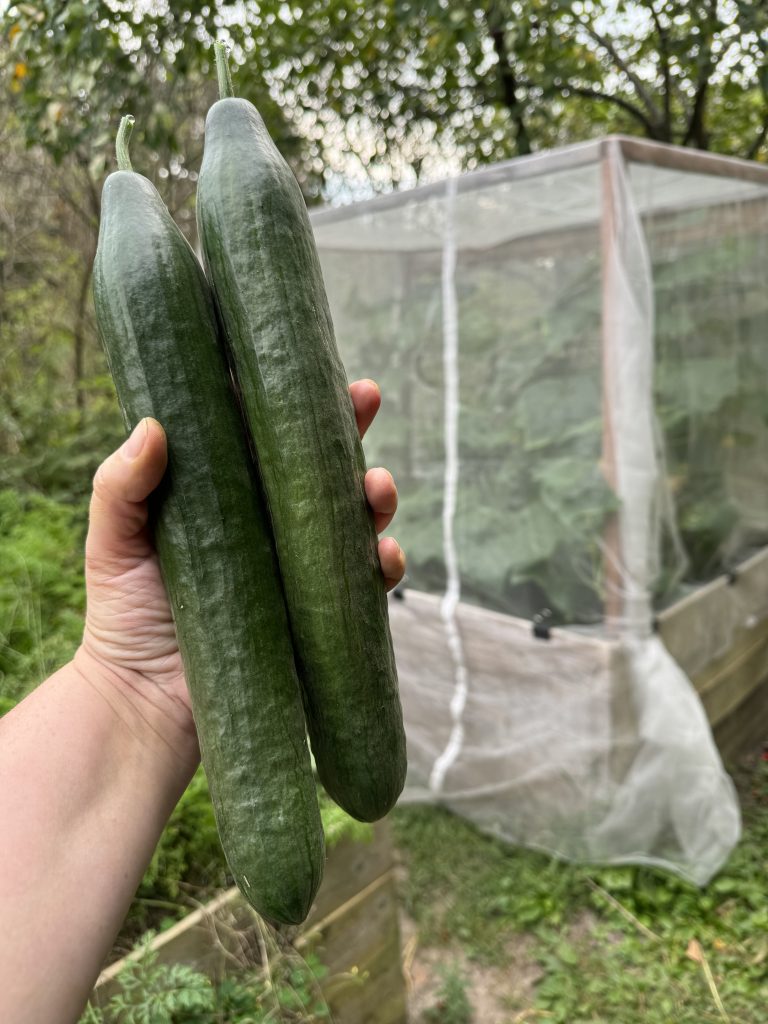
CUCUMBER (Slicing/Fresh Eating)
Pepinex F1
This is a long, dark green, english-style cucumber (like the ones you get wrapped in plastic at the grocery store). They always look stunning and perfect, and they have good flavor. However, one of the main reasons I grow this variety is because it is parthenocarpic, which means it doesn’t need to be pollinated to make fruit (I’ve tried several and this is the best parthenocarpic slicing variety I’ve found). This allows me to grow the plants under netting and protect them from cucumber beetles, which have a pretty bad time with here.
Miniature White
Another variety I’ve been growing for years, these blonde, almost-anemic looking cukes are incredibly sweet and tasty– they’re our favorite for snacking on!
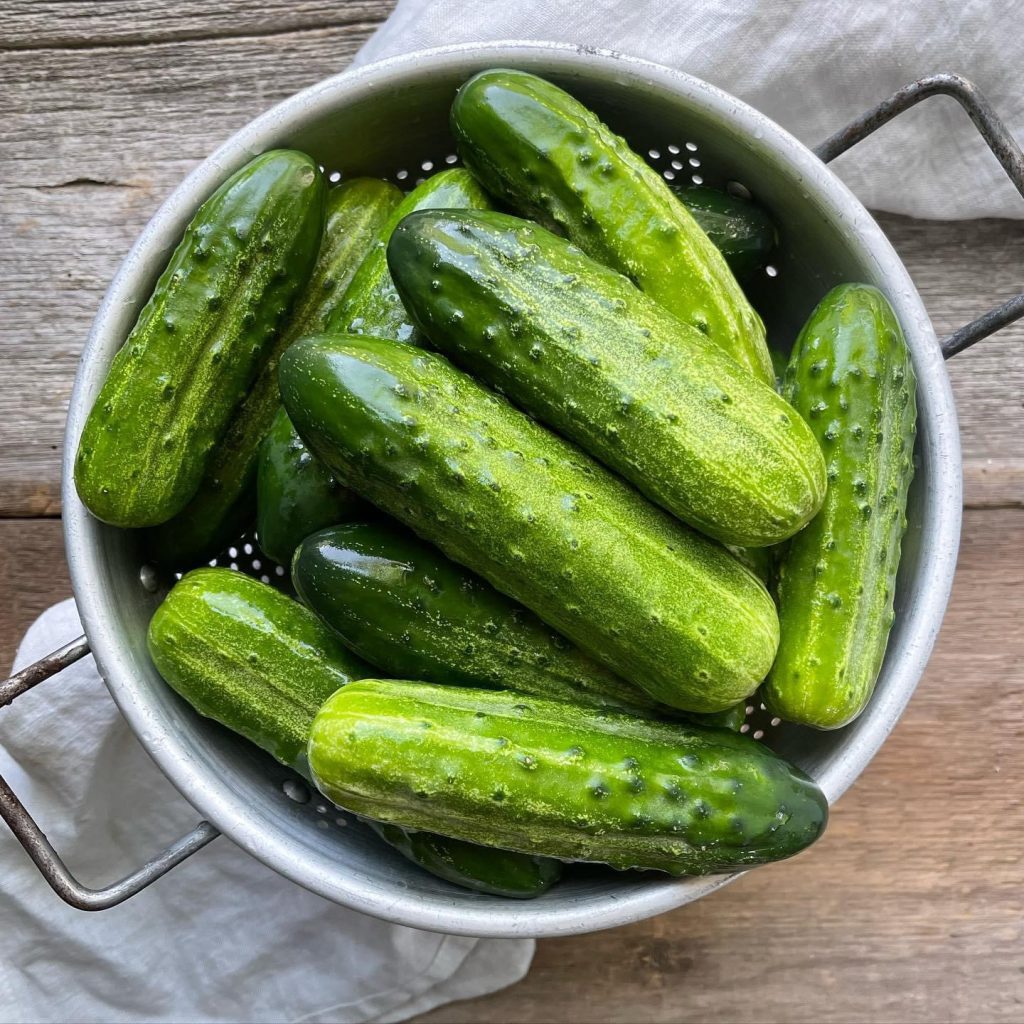
CUCUMBER (Pickling)
Homemade Pickles
Yes, that’s the name of the variety, ha! These grow well for me and produce a plethora of perfectly-pickle sized cucumbers. While you can use any variety of cucumber for fresh eating, these have a slightly more bitter and flavorful skin. Not in a bad way at all though, but in a way that makes them perfect for making crunchy, flavorful pickles! And of course, they also have a small, almost non-existent seed cavity. Here’s how I make crunchy garlic dill refrigerator pickles one jar at a time –> video link.
Cool Breeze
This is a parthenocarpic variety of pickling cucumber, which means I can grow it under netting to protect it from insects. I grow a lot of cucumber varieties every year– some out in the open in the garden, and some under netting. (I just love eating cucumbers so much!) For the regular varieties grown out in the open, some years we have a good cuke year and some years we don’t, which is dependent on our pest pressure that year. The ones, like this one, that I grow under netting, always have a good year and are always my most reliable producers. This variety makes fantastic refrigerator pickles as well, and is decent as a fresh eater too.

KALE
Scarlet
The most gorgeous purple variety, this turns florescent pink in the center when the weather turns cold– it’s quite the looker! After a frost, this variety sweetens and develops a lot of broccoli notes.
Scotch Blue Curly
Trusty and reliable, this one always makes an appearance in my northern garden because it’s the most cold hardy variety I’ve found… we’re sometimes digging it out of the snow to eat in December! It’s a beautiful blue-green color and very ruffly, which I find charming.
Black Magic
My favorite dinosaur-type, this is just a really nice, beautifully dark green kale. It makes the best kale chips and is great in salads. Dinosaur or lacinato-type kales like this one aren’t quite as hardy as the curly leaf type, but they still last well into Fall here, and I love growing a large variety of them.
Dazzling Blue
This lacinato kale is unique because the ribs are purple. It’s a fun and stunning kale! I always have to grow a couple of these for their extra pop of color.
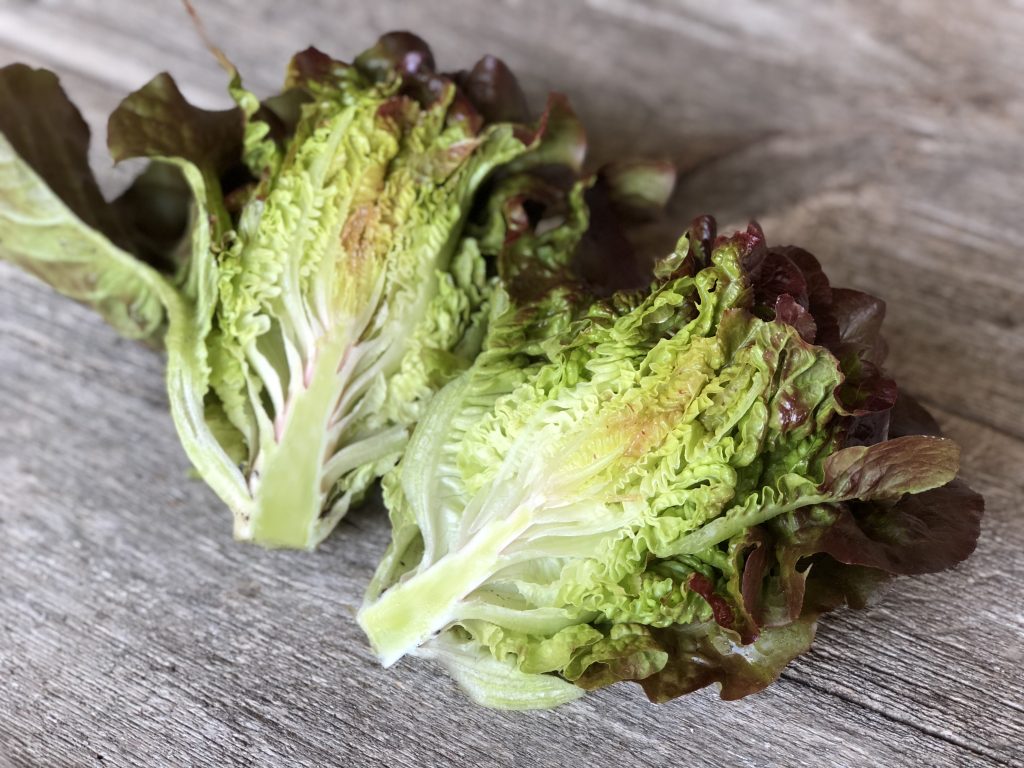
LETTUCE
Encino
I fell in love with this one immediately. The leaves are like no other lettuce I’ve grow– they’re sort of oak leaf shaped, but with a little more frill, and layered. Each leaf has some layers of leaves within it, which makes it feel really substantial and it holds up well in salad. It tastes great, of course, and it forms the most perfect little mounded heads while growing. Here’s how I process lettuce so it keeps 2 weeks in the refrigerator –> video link.
Sunland
This is a romaine lettuce, and the best one of this style I’ve found so far. It’s grown very well for me and forms thick dense heads with thick and robust leaves. I grow a lot of different lettuces every year and always have to have some romaine in the mix! Also, this is my choice for summer BLT sandwiches.
Benefine (Endive)
Not technically a lettuce but I’m putting here because I eat it like one. This is “fancy lettuce,” as I like to call it! It has the most delicate and frilly leaves, and is definitely one of the greens you’d be served at a high end farm to table restaurant or country club. Endive is slightly bitter, which you don’t notice once it’s mixed with other greens and topped with dressing. I love the mouthfeel these finely serrated greens add to all my homegrown salad mixes. Oh, and it stands up well to the heat of the summer too!

ONIONS
Sedona F1
My top favorite onion to grow, these are golden glowing copper orange like the dessert sunset. This is a long day onion, which are the only ones I grow because of my latitude. (Make sure to find out which type you should be growing!) These are great keepers and have wonderful flavor. Here’s my no-fail method from starting onions from seed –> video link.
Rossa di Milano
A close second place, these are a unique pink color on the outside, and light purple on the inside. Also a great keeper, but not quite as great as Sedona. You know the compounds in onions that make them good for you? This variety has been reported to have the highest amount of some of those good things!
Red Carpet F1
Another good keeper, this is the red variety I grow every year. It’s my preferred type for eating raw in things like salads and salsa. There’s nothing that makes it stand out all that much, but it’s a solid onion all around.
Rose de Roscoff Keravel
Vying for the title of most gorgeous onion, are these little gems! While they grow up a little smaller for me (golf ball to tennis ball size), they are well worth it. This is a French heirloom variety with light rosy pink skin that appears pearlescent in the sunlight– truly unbelievable. They have a delicate but complex flavor that isn’t overpowering, and is perfect for raw preparations. These have become my new favorite type for eating on summer salads.

OTHER GREENS
Scarlette Napa Cabbage F1
One of my very favorite things of all time to grow, this is an unbelievably gorgeous pinkish-purple-magenta napa cabbage. It’s wonderful sautéed or eaten raw in salads. I grow this early in spring and late in fall because it loves the cold and doesn’t love the heat.
Perpetual Swiss Chard
This dark leafy green grows a lot more like a spinach than a traditional swiss chard. Instead of having thick stalks with leaves the size of a giant head, these smaller, more tender leaves grown on smaller stalks. I find spinach really hard to grow, so I use this wherever I would use spinach, especially in soups during the winter– it freezes great!

PEPPERS
Candy Cane Red F1
The only specific pepper variety I must grow (I always grow bells, jalapeños, and poblanos too, but am not married to any particular variety (yet) with those). These are sweet, full of amazing flavor, and are uniquely striped with colors from red and orange to yellow and green. The foliage of the plant is variegated too– everything about this pepper is just wonderful.
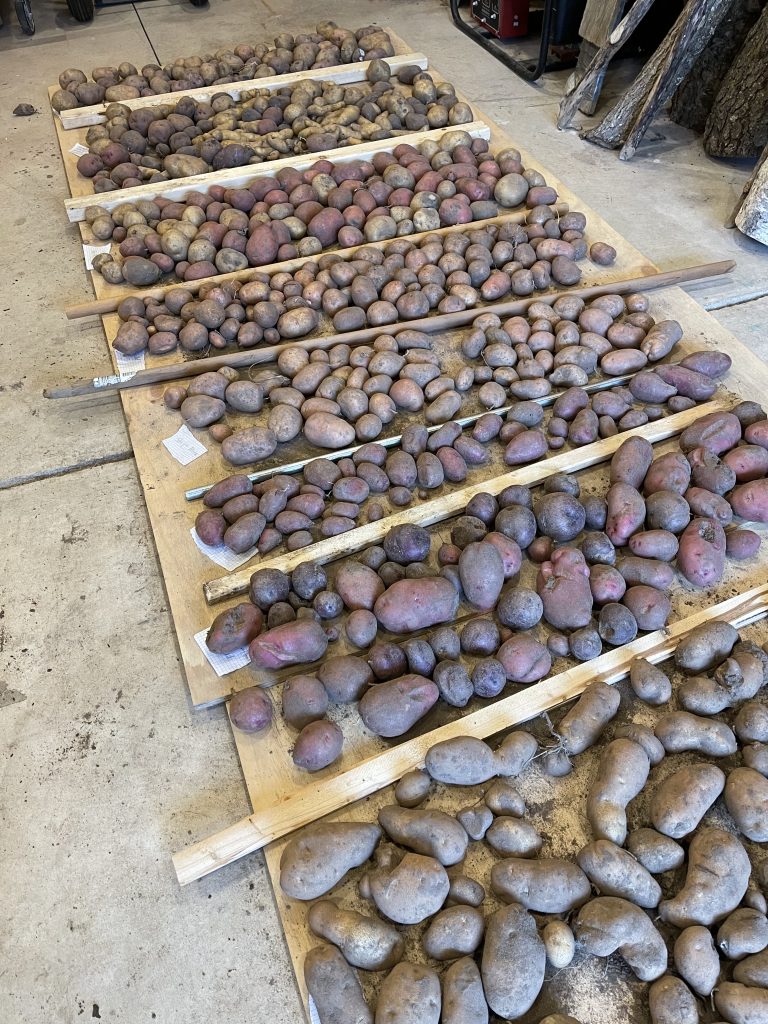
POTATOES
German Butterball
If I could only grow one potato variety, it might be this one. It’s an all-purpose potato, which means it’s great for just about anything you want to make with it. The flesh inside is sunny butter yellow. This is a medium keeper– it lasts a good long time in my root cellar, though not as long as the Russets.
Upstate Abundance
These plants produce an abundance of smaller, uniform size round potatoes. Some people don’t like that, but I think it’s great! One thing I look for when trying new potato varieties is not only how the plants perform and how many potatoes they produce, but how much flavor do the actual potatoes have. Some varieties are very bland and taste like nothing. These were bred to have great flavor, and they also have a nice creamy texture! They’re also fairly early to produce, so these are one of the first varieties we dig in July when I can’t wait to have a fresh, new potato. Another medium keeper.
Norkotah & Burbank Russet
I’ve grown both of these for years, and I can’t really tell a difference between them in either taste or production, so I just continue to grow both. They are common varieties in the upper midwest and are my first choice for baked fries and mashed potatoes. Both have great potato flavor, grow, well, and store well. These will keep the longest and will last until the next year’s potatoes are ready for digging.
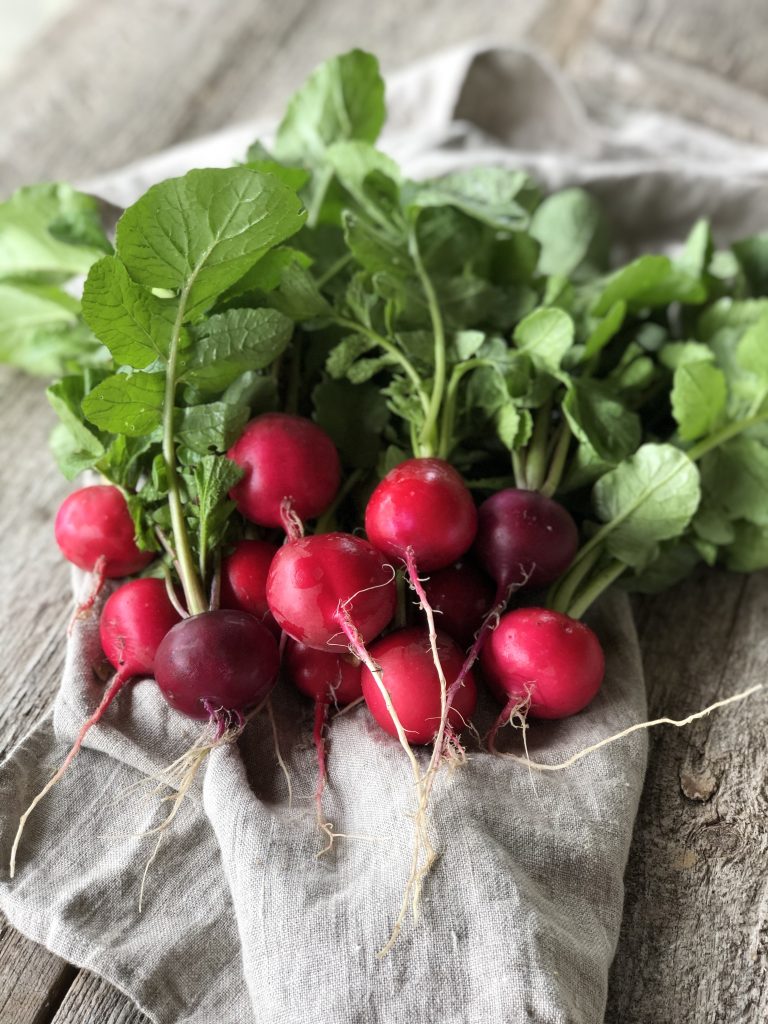
RADISHES
Pink Beauty
Very mild, very easy to grow, and fast growing. It’s not spicy, and it’s not super fast to bolt when the heat of late-Spring sets in.
French Breakfast
A classic radish, this one has just a touch more heat than Pink Beauty. It’s elongated instead of being round, so it looks extra fancy and elegant.
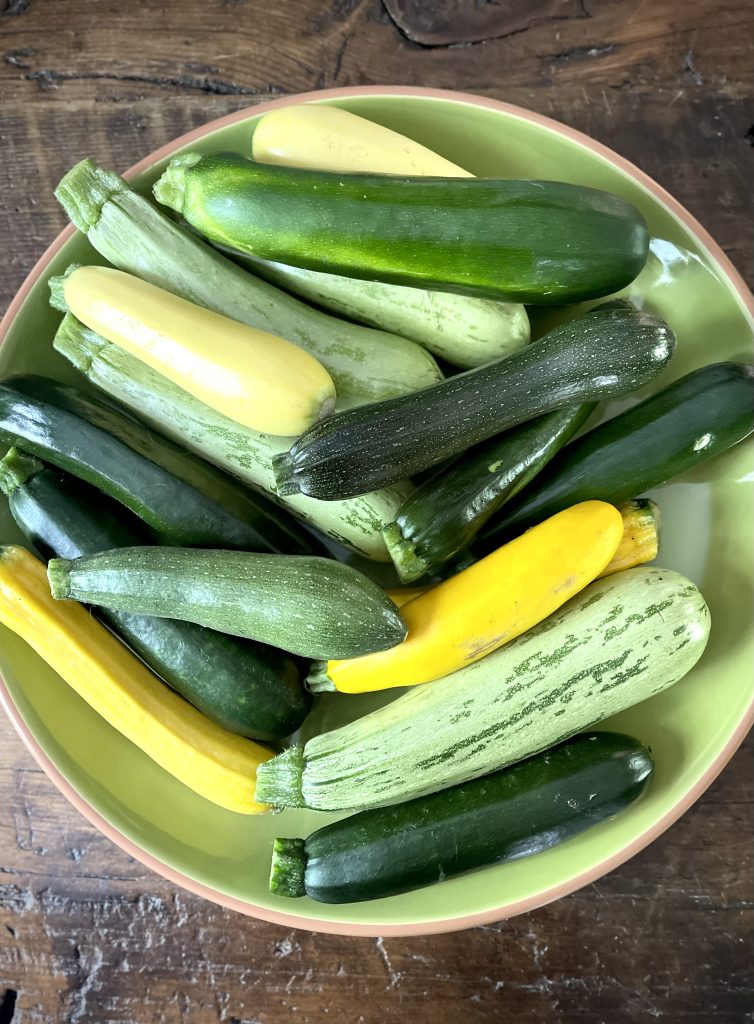
SQUASH (Summer)
Ladoga F1
This is a solid zucchini: the plants are productive, the fruit is a beautiful deep green color, and the skin is tender. I’ve grown a lot of types of green zucchini and have found them all to be pretty similar. However, I put this one at the top of my list because it seems to have just a little more staying power than the others. Because it’s more disease resistant, the plants hang on and produce zucchini for a little longer than the others. If I could only grow one type of zucchini, it would probably be this one.
Dark Star
I’m sure I first tried this one because of the name; I just like it… especially when a lot of other zucchini varieties have odd or hard to pronounce names. I can’t say exactly why I keep growing this one year after year, except for that I am inexplicably drawn to it. It performs well, and the zucchini taste great, but I don’t think it has anything that it makes it all that unique from the myriad of other green varieties available. Don’t change a winning game, I guess!

SQUASH (Winter)
Autumn Frost F1
Probably the most stunningly beautiful squash variety I’ve ever grown, these compact squash are ribbed and light orange in color with a white-washed frosted bloom overtop. They’re great tasting too! Perfect for roasting in the oven and turning into pies or other baked goods.
Honeynut
This was the squash that turned Karl from a squash-hater to a squash-liker! This is a highly sweet and flavorful variety, and my only gripe with it is that it requires a little bit longer growing season than we typically have. There seems to always be a squash or two on each plant that don’t get to fully ripen, but it’s still well worth planting! These are my favorite for cutting in half and roasting in the oven, then topping with butter and maple syrup.
Honeyboat Delicata
There are many different varieties of delicata available, and this is the one I’ve landed on. It grows well for me, and I like that it has a little deeper caramel beige color rather than being brighter yellow on the outside. The skin is thicker, but turns almost crispy when cut into slices and roasted in a hot oven.
Wintersweet F1
The interesting thing about this variety of kabocha squash is that it actually sweetens over time in storage– in fact, you’re not supposed to eat it right away after harvest, but let it sit for a couple months first. I ate one in December and it was sweet indeed! It was up there with some of the best squash I’ve had. Its shape is also cute, and the outside is a lovely earthy blue color. Total winner!
Lady Godiva
This is a squash that is grown for its “naked seeds” and not for its flesh (the flesh is bland and we compost it). The seeds inside are superb! Think pepitas but larger and with a really nutty, buttery, almost walnut-like taste. They’re fun!
Small Wonder Spaghetti F1
These are little mini softball to melon-sized spaghetti squash, which I prefer because I’m the only one in this house who cares to eat spaghetti squash.
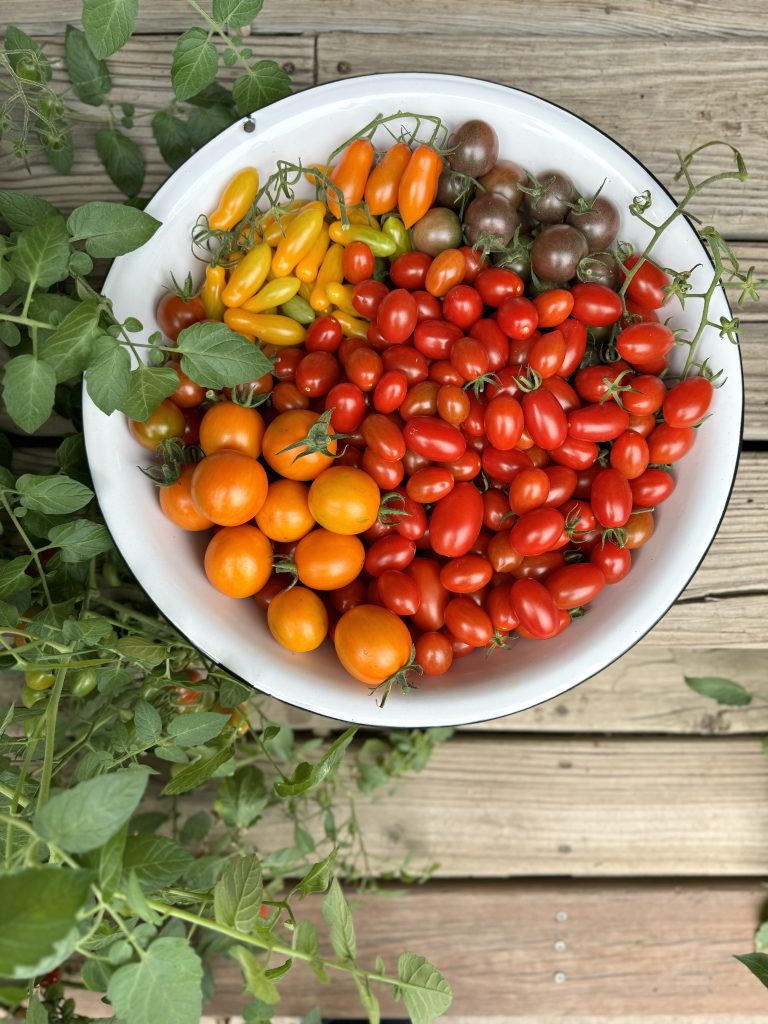
TOMATOES (Cherry)
Valentine F1
My favorite red cherry tomato. It’s meaty for a cherry, has very good sweetness, a nice hit of acid, and plenty of rich tomato flavor for such a small package! The most striking “true red” color, these are gorgeous and an all around great tomato.
Black Cherry
A juicy cherry tomato with all the deep tomato notes that most darker tomatoes have. I’m drawn to the color of this– it’s such a beautiful and unexpected color. It’s never that prolific for me, but I grow it every year anyways.
Juliet F1
If I could only grow one tomato, it would be this one. It’s wildly prolific– it’s the first tomato to produce in the spring, and the last to stop in the fall. She’s an absolute work horse! Juliet tomatoes are often described as a “small roma,” so they are bigger than a standard cherry tomato but smaller than most paste tomatoes. They excel at everything… I use them for saucing, making fresh salsa, slicing on salads, and they’re my absolute favorite for making oven-roasted sun-dried tomatoes.
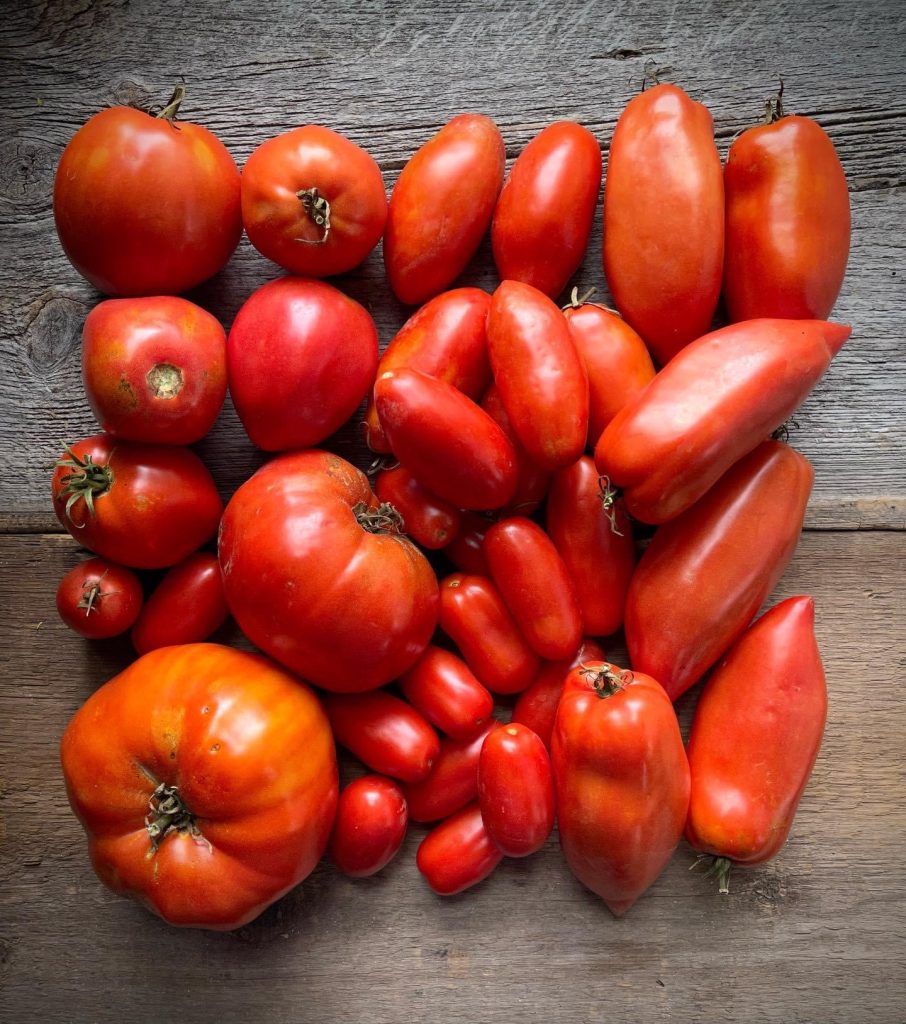
TOMATOES (Sauce)
Amish Paste
A mighty fine tomato for making sauce, this variety has good flavor, and I love that it’s on the larger size and a little more substantial than most other paste tomatoes. Because these are big, they are quick to process, which I appreciate!
Pomodoro Squisito F1
These tomatoes are oblong and cylinder shaped… they’re just super neat looking. Having good flavor and being super meaty inside makes these tomatoes a joy to turn into sauce. Solid tomato + fun unique shape = must grow!
San Marzano
Another classic, these have some of the best flavor of any paste tomato I’ve grown. Plus they’re super prolific! The only downside is that they aren’t as substantial and meaty as some other varieties.

TOMATOES (Beefsteak/Slicing)
Russian Rose
My very favorite tomato for fresh eating during the summer! This is the tomato I want on my BLT– one slice fills the entire piece of bread. I love the color and shape of these– they’re really feminine with a beautiful rosy red-pink color, and have a lovely shape with ribbing at the top. They have a great balance of sweetness and acidity and amazing tomato flavor.
Big Rainbow
This was one of the first heirloom tomatoes I ever grew when I started gardening on my own long long ago, and I’ve been growing them ever since! These are huge, and mostly deep yellow or golden color with red streaks running through them inside. They’re meaty and heavy, and have a really nice acidity. They are one of the later producing varieties, often the last variety I harvest… but they’re worth the wait!
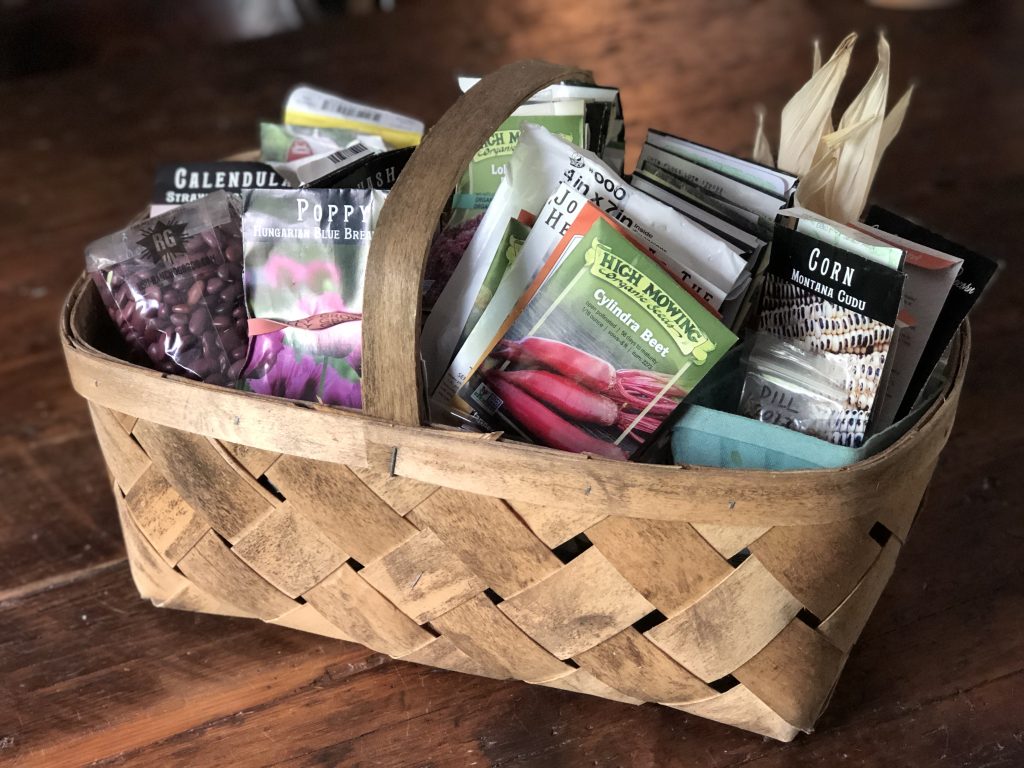
Best Places to Order Seeds
Folks always ask me where I like to order seeds from, and my answer is usually, “from whoever has what I want!” My gardening style has changed over the years as I’ve gotten more experienced. When I first started, I would sit down with one seed catalog, circle everything I wanted from that one place, and order (which is a great option for beginners when choosing varieties feels overwhelming!). Now, I know what varieties I want to grow, and I buy from whoever has them. While I do try to order from as few places as possible (to save on shipping costs), I order from as many as it takes.
There are SO many great seed companies out there, and I’m sure I’ve only scratched the surface. Here are some of my favorites!
I have affiliate accounts with the two main seed companies I love: High Mowing and Botanical Interests, as well as Wood Prairie Farm seed potato company. Going through my links below to purchase your seeds is a great way to support me and the information I share, and I sure do appreciate it!
SEEDS
High Mowing
My very favorite seed company and the place I order most of my seeds from every year. They have the best selection of the things on my “must grow every year” list, and they’ve always got something new and exciting that I just have to have. Shop High Mowing Seeds –> link here!
Botanical Interests
Another top favorite because they have a fantastic selection of interesting and awesome varieties, as well as great quality. Botanical Interests is owned by Epic Gardening, and I shop their seeds through the Epic website because I have a discount code. The code “WHOLEFEDHOMESTEAD” will get you 5% off! Shop Botanical Interest Seeds –> link here!
Territorial Seeds
Territorial has a really great selection of both hybrid and open-pollinated varieties. They are generous with the seed amounts, and are very high quality as well.
Adaptive Seeds
Always a great selection with something unique. I don’t order from Adaptive every single year, but I have them on rotation and take a look at their offerings every once in a while because they do have some neat things (one of my favorite onions is only available here!). A solid seed company doing great work! They specialize in seeds adapted to the PNW, so if you’re in that area, definitely give them a try!
Seed Savers
I really like this company– they offer only heirloom seeds, and the selection that they have is really solid. This is the first company I ordered seeds from long ago, and I think it’s a great option for beginner gardeners, especially if you feel overwhelmed. Seed Savers loves to share the stories that come with the seeds, and I think that is so cool! I love knowing about the family that a variety came from, or the history of how certain varieties of seeds ended up in our hands today. I know that whatever I order from them is going to be a great choice.
POTATOES
Wood Prairie Farm
The highest quality seed potatoes you can get– these are certified organic and grown with a lot of care by a small family who has been doing it for over 40 years! The code “WFH5” will get you 5% off. Shop Wood Prairie Seed Potatoes –> link here!
Maine Potato Lady
One of the largest selection of potato varieties I’ve seen, Maine Potato Lady has such an amazing variety of seed potatoes available. They are a little on the spendy side, and shipping costs are high, so I only order really special varieties that I can’t get anywhere else.
Seed Savers
I’ve ordered seed potatoes from Seed Savers a few times and have always found them to be good quality. They don’t have a huge selection, but what they do have are great varieties.
This post may contain affiliate links, which means that if you click through them and end up purchasing an item I may receive monetary or other compensation. The price you pay is unaffected by using this link, and buying stuff you were going to get anyways through an affiliate link is a great way to support your favorite blogger and fellow homesteader! Thanks!





Thanks for this resource!!!
This is such an incredible resource!! :)
Thank you so much. I am in zone 4 as well and will be using this to help me choose my veggies this spring. I really appreciate you taking the time to put this together!!
Glad it was helpful, thanks!
This is a amazing post. Thanks so much
I’m in zone 8a. Do you know a blogger or other resource that would be additionally helpful for my zone specific growing needs and issues?
Thanks for all of the wonderful information! The You Tube videos on starting and growing onions were especially helpful! Thanks again from zone 6–southeastern Massachusetts!